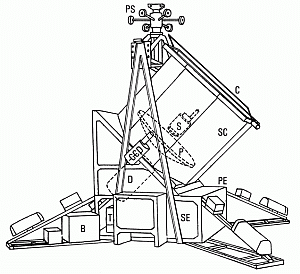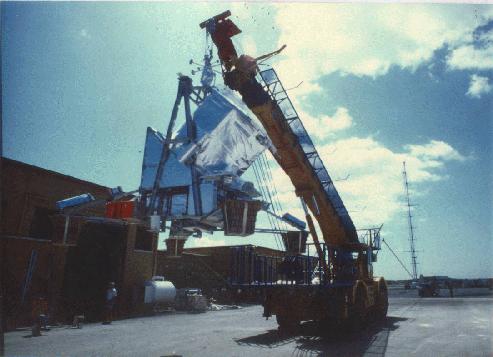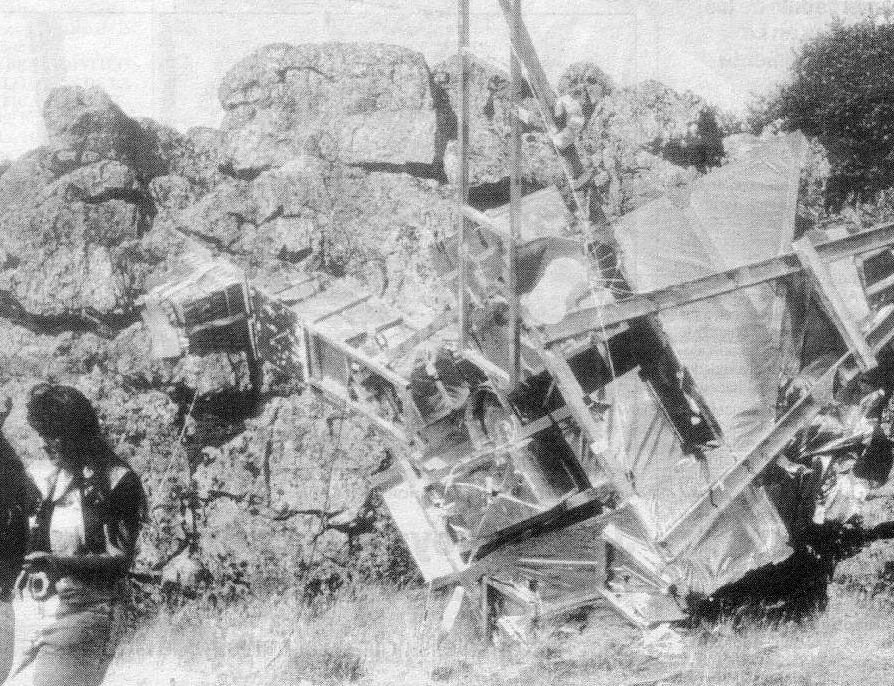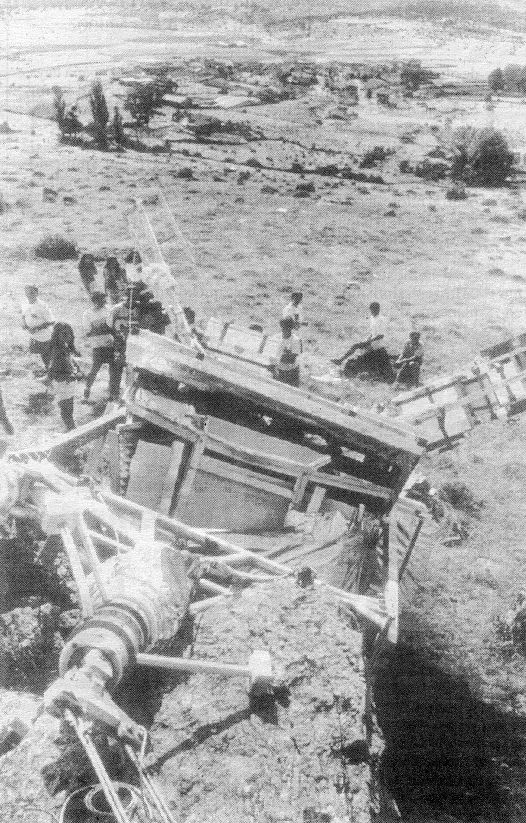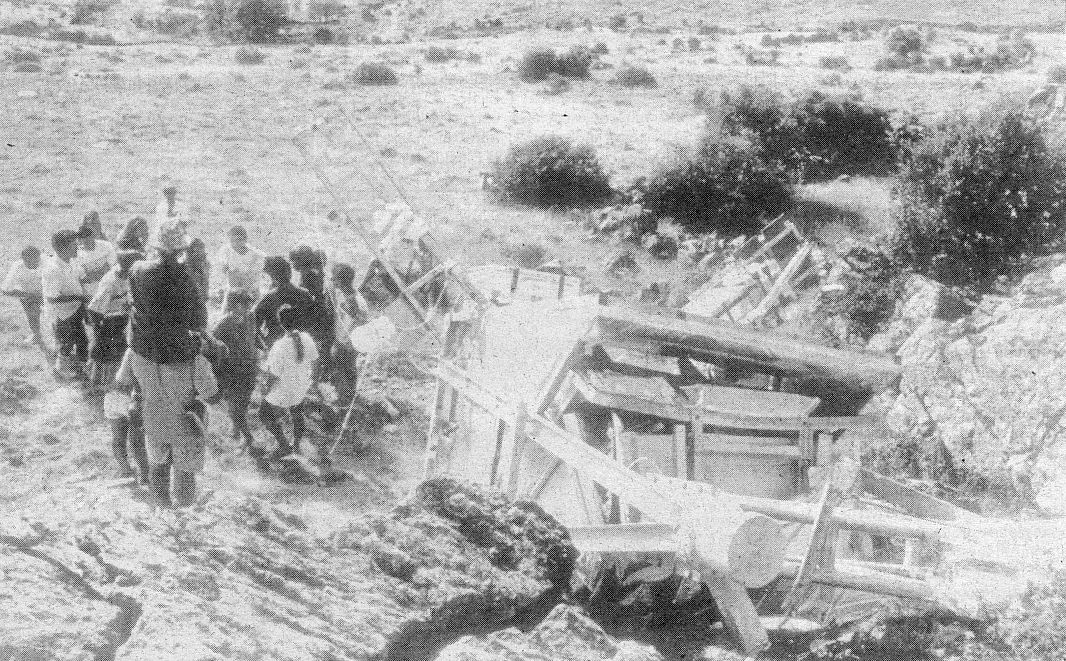Purpose of the flight and payload description
The main objective of the instrument is to make observations of the Cosmic Microwaves Background anisotropies.
The heart of the ARGO experiment is a Cassegrian Telescope, the primary mirror has a diameter of 120 cm and was built in alluminium alloy for a total weight of 35 Kg.
The secondary mirror is also in aluminum alloy and can be wobbled with an amplitude of 4º with respect to the optical axis.
Radiation collected from the telescope is then, splited in 4 cryogenic bolometric detectors.
The telescope is completed by a large thermal radiation shield made using an aluminium skeleton supporting a 10 cm thick glass wool insulation covered with several foils of aluminized mylar. The overall instrument is mounted on a stabilized gondola.
During this flight the telescope observed 63 independent sky fields in Hercules with an angular resolution of 52 min full width half maximum (FWHM).
Details of the balloon flight
Balloon launched on: 8/4/1993 at 18:10 UTC
Launch site: Base di Lancio Luigi Broglio, Trapani, Sicily, Italy
Balloon launched by: Agenzia Spaziale Italiana (ASI)
Balloon manufacturer/size/composition: Zero Pressure Balloon 960.000 m3
End of flight (L for landing time, W for last contact, otherwise termination time): 8/5/1993 at 14:25 UTC
Balloon flight duration (F: time at float only, otherwise total flight time in d:days / h:hours or m:minutes - ): 20 h 15 m
Landing site: Near Ojos Albos, Avila, Spain
Gondola weight: ~1.500 kgs
The balloon was launched from the balloon base of Trapani, Sicily at 18:10 utc on August 4, 1993 using the dynamic method with a crane acting as launch vehicle. A float altitude of 2.7 mb was reached at 21:00 utc starting to travel over the mediterranean towards Spain. After a flight of near 20 hours, the payload was cutdown at 14:25 utc on August 5th, and was recovered near the small town of Ojos Albos in Avila, Spain.
External references
- ARGO 1993 Observations of Interstellar Dust Emission Astrophysical Journal v.452, p.253
- Balloon-borne 3He cryostat for millimetre bolometric photometry Cryogenics, Volume 34, Issue 12, p. 1001-1005
- Degree-Scale Observations of Cosmic Microwave Background Anisotropies Astrophysical Journal, Part 2 - Letters, vol. 422, no. 2, p. L33
- Far infrared multi-frequency observation of interstellar dust clouds Planetary and Space Science, Volume 43, Issue 10, p. 1401-1404
- Search for Cosmic-Microwave-Background anisotropies at degree angular scales: The ARGO 1993 experiment Il Nuovo Cimento C 16, 721-726 (1993)
- The ARGO 1993 Flight: Detection of CMB Anisotropies at Angular Scales Around One Degree Astrophysical Letters and Communications, Vol. 32, p.229
- Transmediterranean flights, in the edge of two centuries Advances in Space Research Volume 33, Issue 10, 2004, Pages 1594-1599
2072If you consider this website interesting or useful, you can help me to keep it up and running with a small donation to cover the operational costs. Just the equivalent of the price of a cup of coffee helps a lot.

